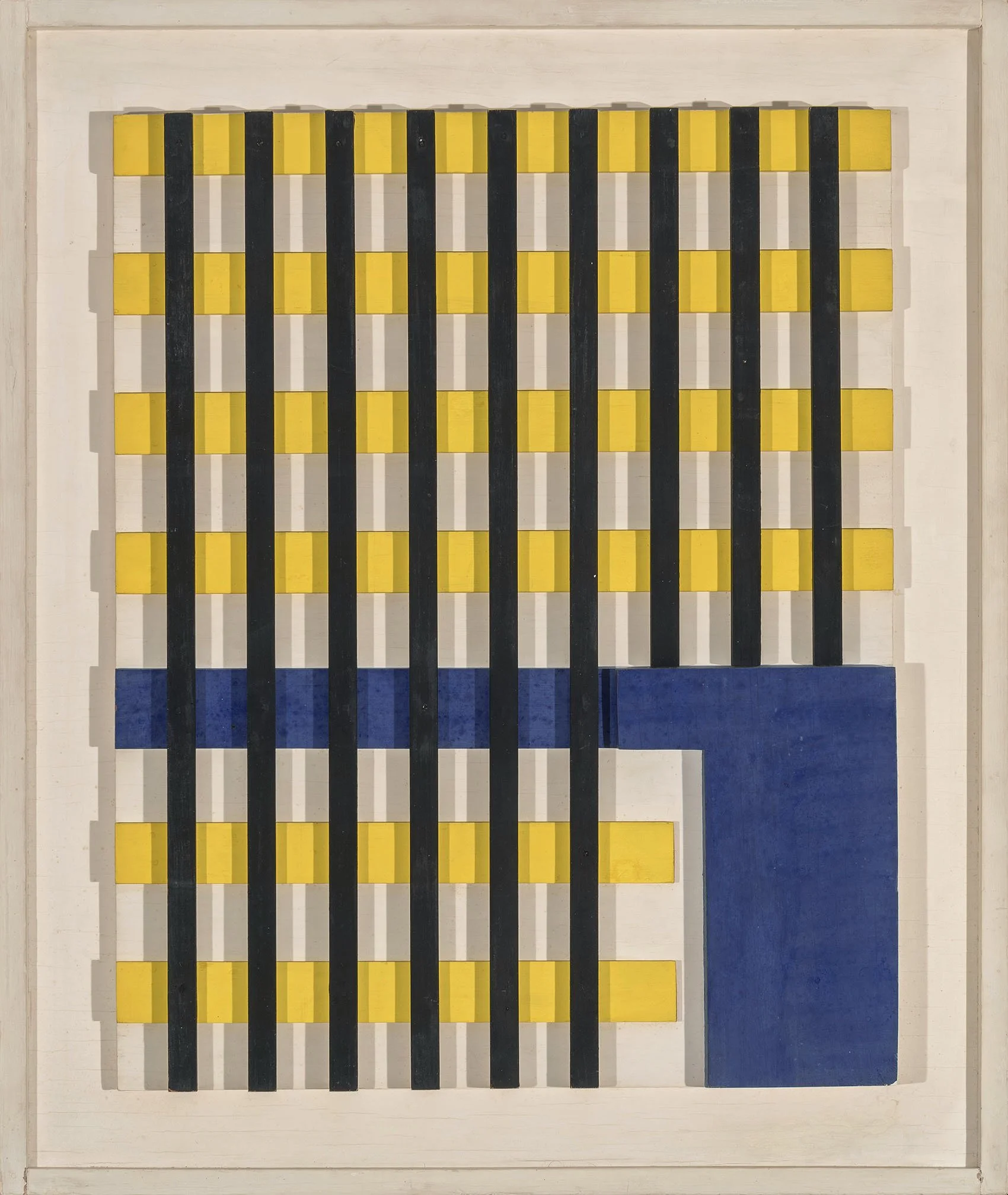CHARLES BIEDERMAN (1906-2004)
Available Work | Biography
Biography • Charles Biederman (1906-2004)
At the age of sixteen, Charles Biederman was apprenticed to a commercial art studio in Cleveland, where he worked for four years before enrolling at the Art Institute of Chicago in 1926. In his early years as an artist, Biederman's admiration for Cézanne and the Cubists was incorporated into his landscape paintings. When Biederman moved to New York in 1934 he began to paint pure abstraction, encouraged by the friendships he forged with other artists committed to modernism, such as George L. K. Morris, Albert E. Gallatin and Charles Green Shaw. Two major influences on his artistic developemtn in New York were the Cubist works at the Gallery of Living Art and the Joan Miró paintings shown at the Pierre Matisse Gallery.
In addition to painting, Biederman began to create reliefs and collages in 1935. Biederman was an early artist to create painted sculptural wall reliefs, often using wood, thumb tacks, and string. Biederman's first critical success came in 1936 with his first solo exhibition at the Pierre Matisse Gallery in New York. The exhibition was well timed, opening the same day as Alfred H. Barr's landmark exhibition Cubism and Abstract Art at the Museum of Modern Art. In the same month, Biederman's work was also shown at the exhibition, Five Contemporary American Concretionists: Biederman, Calder, Ferren, Morris and Shaw, organized by Albert E. Gallatin and later shown at the Galerie Pierre in Paris and the Mayor Gallery in London.
In October of 1936 Charles Biederman moved to Paris, where he remained until the following June. In Paris Biederman was struck by the technology displayed at the 1937 World's Fair. While in Paris, Biederman established a studio and joined artistic circles that included Mondrian, Pevsner, Brancusi, Arp, Miró, Léger, and other leading avant-garde artists.
After returning to the United States in 1937, Biederman gradually began to shift from biomorphic imagery towards a stricter use of pure geometry. Although never abandoning painting, Biederman began to focus more and more on three-dimensional works as his career evolved. Increasingly he explored using new materials, such as metal, plastic and Bakelite. In 1940 Biederman became the first known artist to use fluorescent lights in art for his relief entitled Number 9, New York, July, 1940.
Charles Biederman was not only an artist, but a philosopher and an art historian. In 1938 Biederman attended a seminar in Chicago led by Alfred Korzybski, the founder of the Institute for General Semantics. This led him to apply these philosophies to the history of art. This interest culminated in his publication of Art as the Evolution of Visual Knowledge in 1948, a massive text that explores Korzybski's ideas as they related to the history of art. Charles Biederman moved to Red Wing, Minnesota in 1942 with his wife and baby daughter, where he continued to produce innovative paintings and sculptural wall reliefs until his death in late 2004.
The Walker Art Center in Minneapolis held a retrospective of Charles Biederman’s paintings and constructions in 1965. The Minneapolis Institute of Arts followed with a major retrospective of 250 works, half of which were constructions, from October 1976 to January 1977. Biederman was represented by Grace Borgenicht Gallery from 1979 until the gallery closed in 1996. In 1991 Biederman agreed to bequeath the artistic and archival portions of his estate to the Frederick R. Weisman Art Museum in Minneapolis, which now holds a collection of Biederman's art, his library, and all his writings and correspondence. The Weisman Art Museum in Minneapolis had an exhibition of Biederman's work in 1999. The Cedar Rapids Museum of Art held the exhibition Charles Biederman: An American Idealist in 2003. A major monograph written by Neil Juhl Larsen and Susan C. Larsen was published in 2011 by Hudson Hills.
Biederman's artwork can be found in many public collections, including: the Metropolitan Museum of Art, New York, NY; the Museum of Modern Art, New York, NY; the Whitney Museum of American Art, New York, NY; the Hirshhorn Museum and Sculpture Garden, Washington, D.C.; the High Museum, Atlanta, GA and the Art Institute of Chicago, IL.







